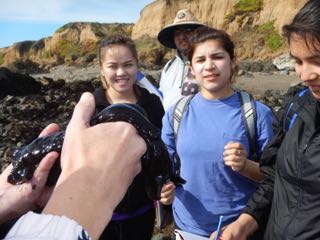
California sea hares (Aplysia californica) are known to be more common in central California during relatively warm El Niño years.
| 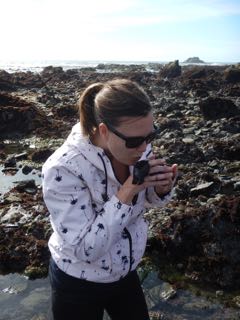
-
| 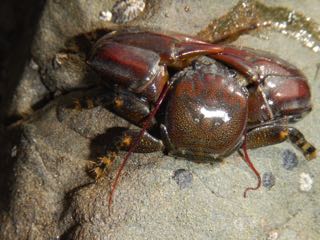
The very common (under rocks) suspension feeding anomuran crab, Petrolisthes cinctipes.
|

Mopalia muscosa (mossy chiton)
| 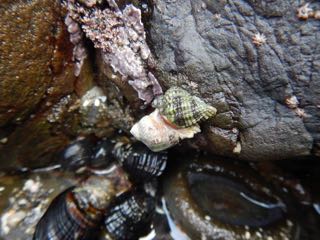
A pair of apparently copulating Ocinebrina circumtexta
| 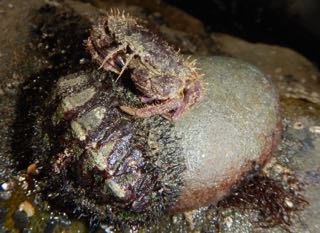
Romaleon antennarium (formerly Cancer antennarius), sometimes called a Pacific rock crab, placed next to a Mopalia muscosa (mossy chiton)
|
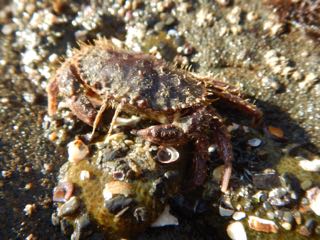
-
| 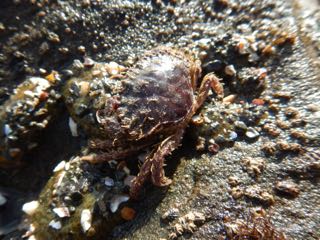
-
| 
Ocinebrina circumtexta (L) and Acanthinucella spirata (R) were the two most common whelks we saw.
|

surfgrass limpet ("Lottia" paleacea) on Scouler's surfgrass (Phyllospadix scouleri)
| 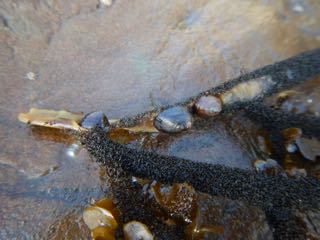
seaweed limpet (Lottia insessa) on featherboa kelp (Egregia menziesii)
| 
The grazing activity of this surfgrass limpet is revealed by the lighter colored patches near the limpet.
|

-
| 
-
| 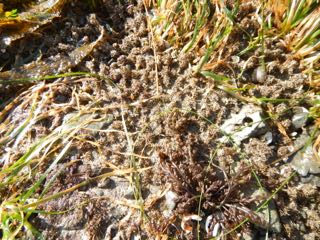
A polychaete, Pista elongata (Terebellidae)
|
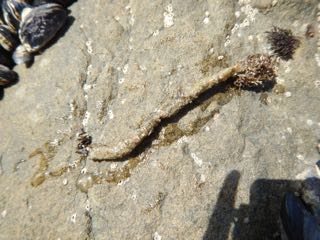
Pista elongata removed from the sediment
| 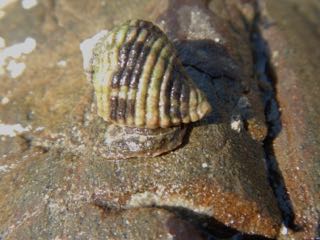
Once again, as in multiple previous visits, we observed Ocinebrina circumtexta (circled rock snail) feeding on a limpet. Other members of this genus have been documented to feed on limpets so this is probably not a surprising observation.
| 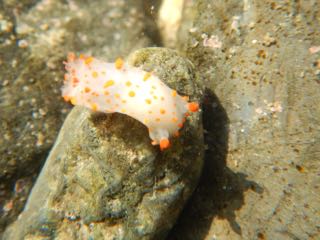
sea clown triopha (Triopha catalinae)
|
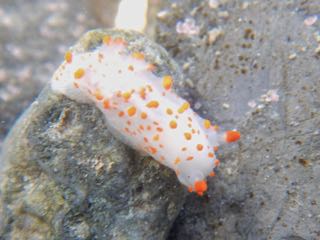
sea clown triopha (Triopha catalinae)
| 
Dodecaceria fewkesi (Cirratulidae) forms mounds of this calcareous reef forming and asexually dividing polychaete.
| 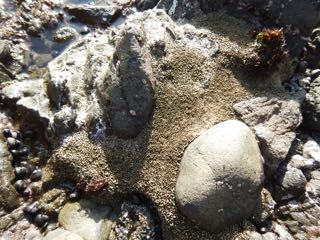
Dodecaceria fewkesi
|
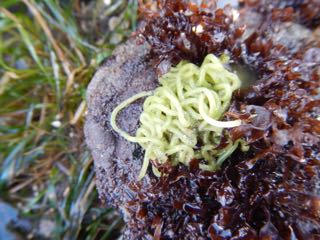
a California sea hare (Aplysia californica) egg mass
| 
Besides the other organisms, this rock had four species of chitons. Most are Stenoplax heathiana (Heath's chiton). The two small tannish chitons in the middle are Leptochiton rugatus (red-footed chiton). On the lower right are Lepidozona cooperi (L) and Mopalia lignosa (R).
| 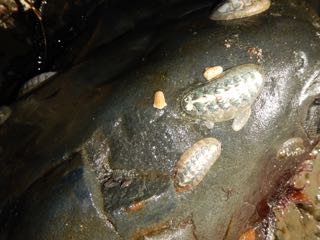
The cream-colored Leptochiton rugatus (red-footed chiton) are normally found with their girdle extended near their tail valve like this. It has to do with their posterior gill arrangement. The are next to the largest of several Stenoplax heathiana (Heath's chitons), which just crawled away from a bunch of apparently commensal Vitrinella oldroydi micro snails, which can also be found with the more southern Stenoplax conspicua.
|
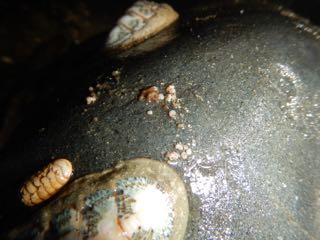
-
| 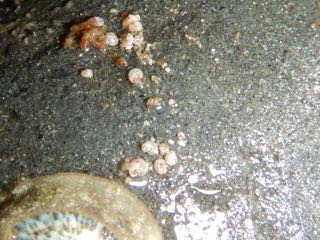
Same image as the last one cropped to highlight the commensal snails, Vitrinella oldroydi, associated with the Heath's chiton, Stenoplax heathiana.
| 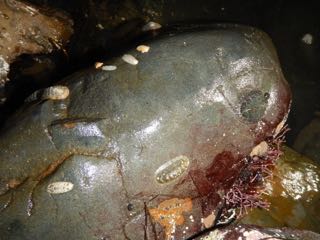
Cooper's chiton (Lepidozona cooperi; lower central) and woody chiton (Mopalia lignosa; on right)
|
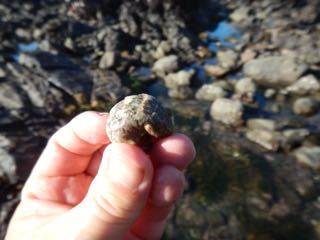
Heath's chiton (Stenoplax heathiana)
| 
Notice how the oral region of this and some other closely related Stenoplax spp. is pigmented. I hypothosize that this has something to do with how they stick their mouth out from under a rock to catch drift kelp, trying to be as inconspicuous as possible.
| 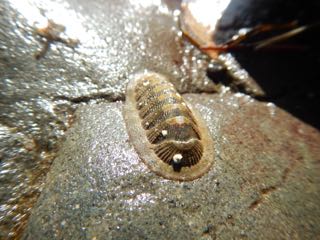
Cooper's chiton (Lepidozona cooperi)
|
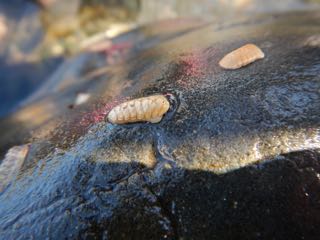
I call Leptochiton rugatus the red-footed chiton because its foot is a distinctive liver red color, which we showed was because it has tissue hemoglobins - (Eernisse et al., 1988).
| 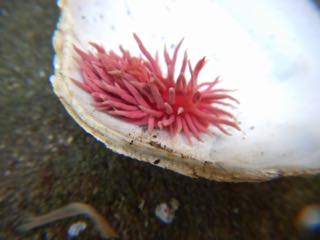
We saw lots of Hopkins' rose dorid nudibranchs (Okenia rosacea).
| 
The world's largest chiton species, Cryptochiton stelleri, known as the gumboot chiton, but I still think "traveling meatloaf" should be the official common name.
|
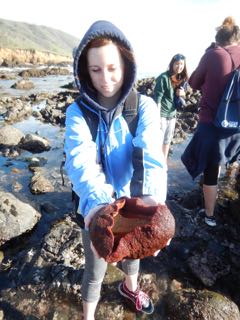
-
| 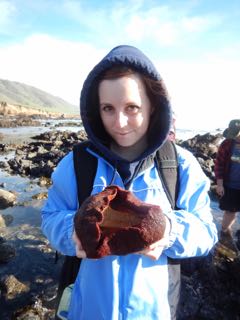
-
| 
On the left is a sea cucumber that thinks it is a chiton: Lissothuria nutriens (same family, Psolidae, as Psolus chitonoides). On the right is a small anemone, I think Epiactis prolifera, which one of my students found drifting in a tidepool. I tried to get it to reattach on this rock but it kept letting go, like Stomphia coccinea is well known to do.
|

Here is the underside of the Lissothuria nutriens. This species broods embryos in pits on the other ("dorsal") side. Note that it has three of its five rows of tube feet directed toward the rock to hang on like a chiton.
| 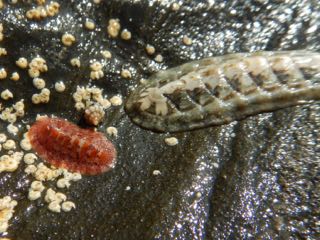
On left is a small Mertens' chiton (Lepidozona mertensii), near a Heath's chiton (fairly small, so still uneroded). In between is I think probably a juvenile Ocinebrina circumtexta (circled rock snail) juvenile.
| 
This limpet turned out to be shell only, probably a Lottia scutum with the shell broken on the lateral margins to make it look narrower than it was in life.
|
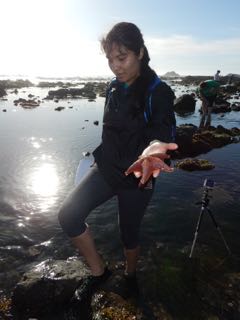
Bat star (Patiria miniata) -- we saw several, which is encouraging, considering that these have been recently affected by seastar wasting disease.
| 
Cryptochiton stelleri aka wandering meatloaf
| 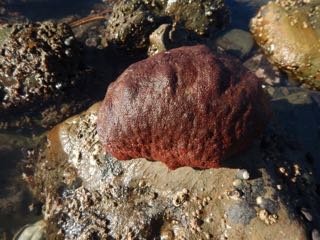
-
|
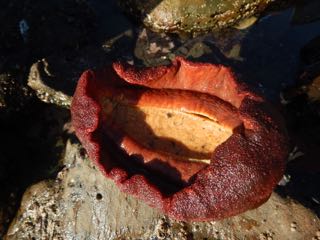
-
| 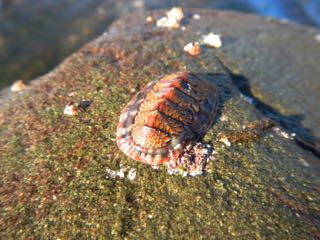
We found several Loki's chitons (Tonicella lokii), and the zigzag lines on its head valve distinguish this species in the intertidal from the co-occurring Tonicella lineata, which has arched lines on the head valve instead. Although my students tend to call it the psychedelic chiton, it was named by Roger Clark in 1999 for the Norse god of mischief and deception - (Clark, 1999).
| 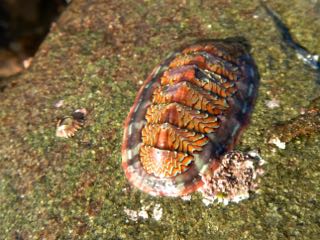
-
|
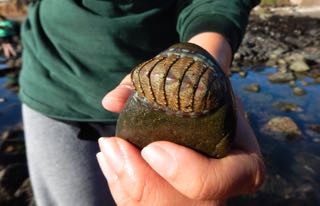
-
| 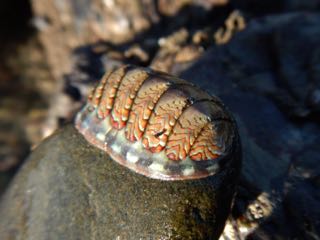
-
| 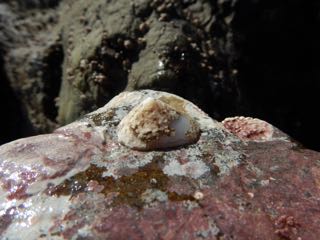
Like Loki's chiton (Tonicella lokii), the duncecap limpet (Acmaea mitra) is a specialist grazer on coralline red algae.
|

Spiny brittle star (Ophiothrix spiculata) with some regenerating arm tips.
| 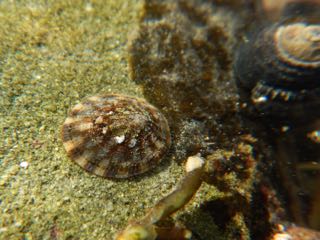
Probably Lottia scutum. Notice the frill of sensory tentacles emerging from the mantle tissue near the shell margin.
| 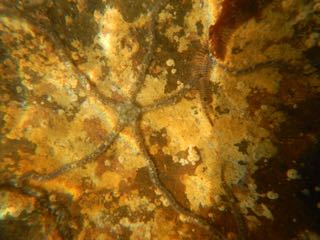
Tentative: long-rayed brittle star (Amphiodia occidentalis) or the related A. akosmos. The former spawns large yolky eggs and the latter bears live young. There is also a strictly subtidal congener, A. urtica, which has planktotrophic plutei.
|

-
| 
Ocinebrina interfossa juvenile (ID confirmed by Shawn Wiedrick)
| 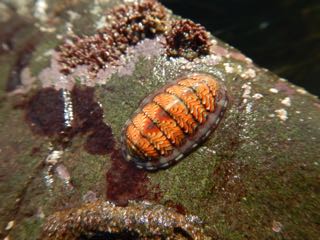
Tonicella lokii
|
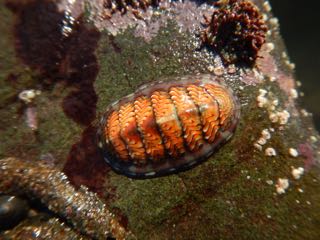
-
| 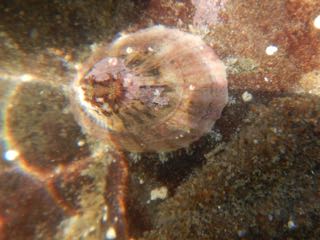
Fissurella volcano (volcano keyhole limpet)
| 
-
|
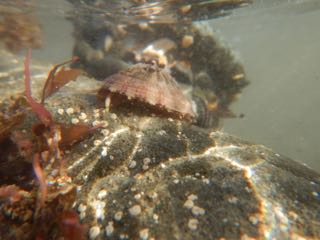
-
| 
-
| 
-
|
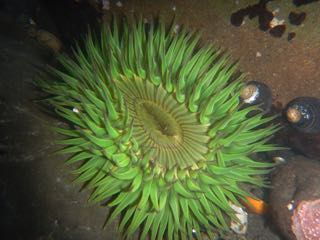
Sunburst anemone (Anthopleura sola)
| 
-
| 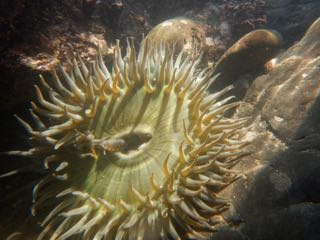
I am not sure what this Anthopleura sola was eating.
|

Acmaea mitra
| 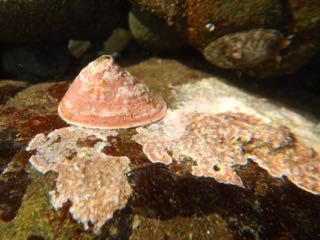
-
| 
-
|
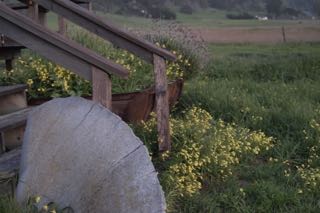
-
| 
-
| 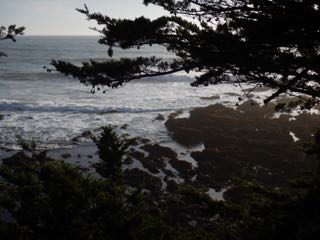
-
|
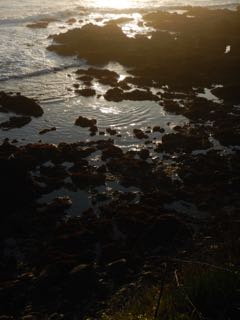
-
| 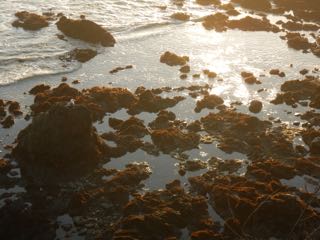
-
| 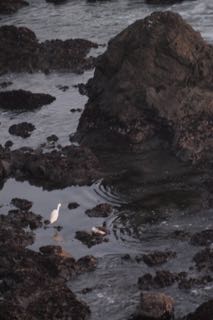
-
|
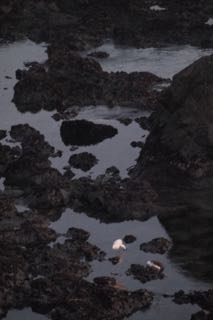
A great egret with its head underwater.
| 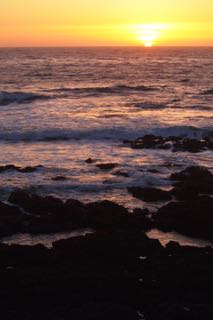
-
| 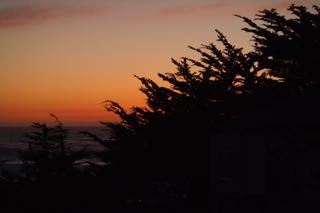
-
|
 Under Construction!
Under Construction! Under Construction!
Under Construction!